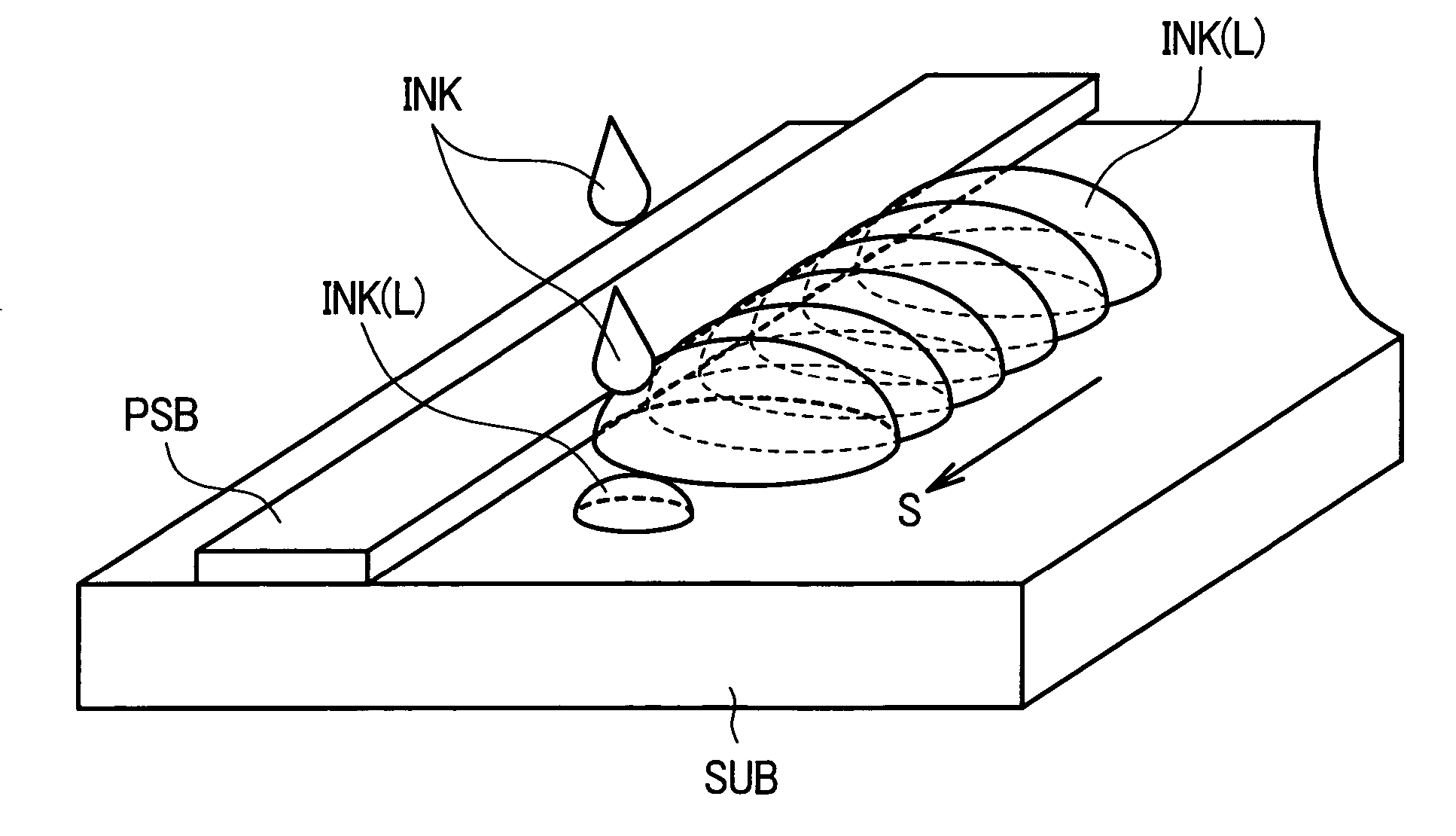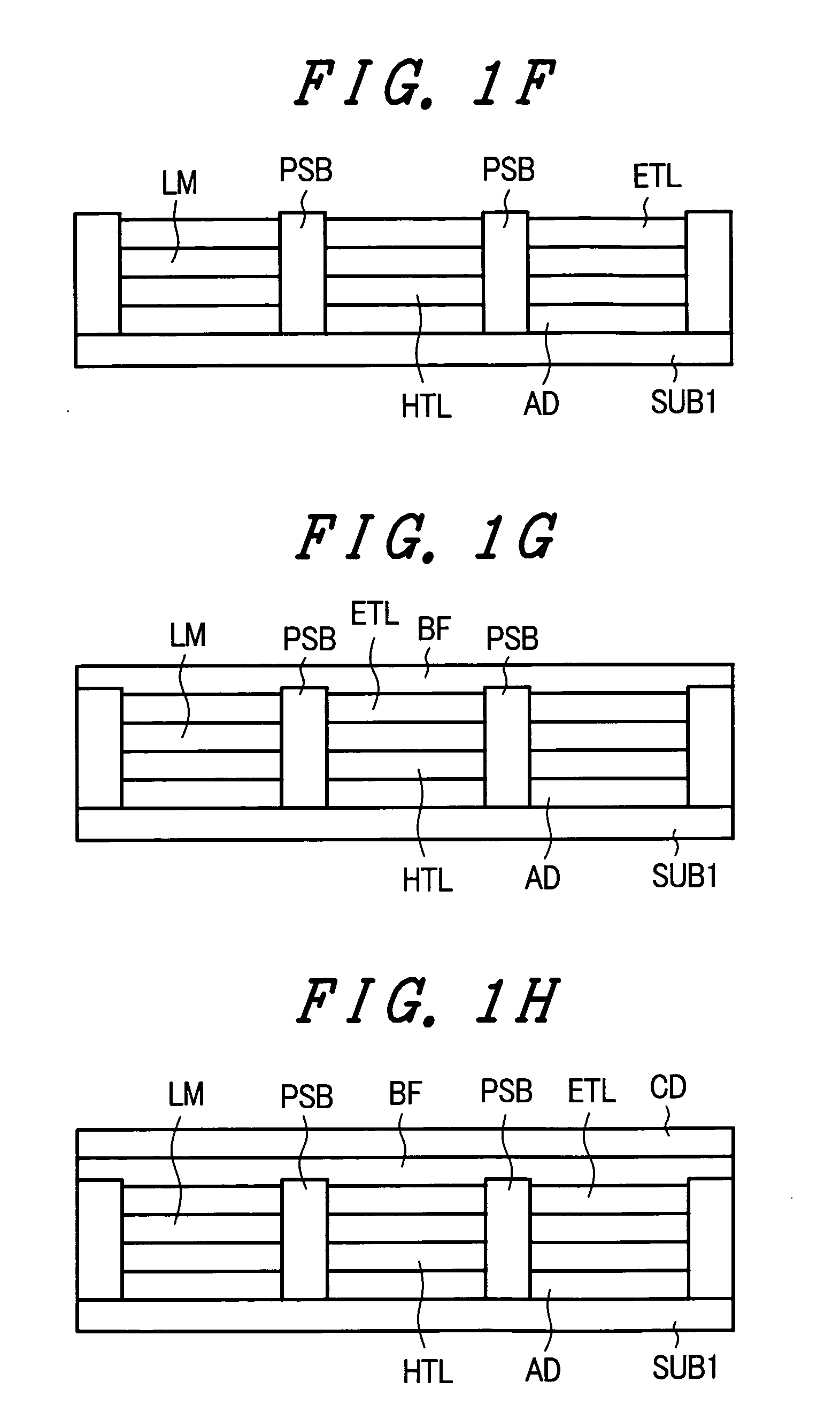Method of manufacturing electron device and organic electroluminescent display and ink for organic amorphous film
a technology of electron device and organic electroluminescent display, which is applied in the direction of luminescent compositions, coatings, inks, etc., can solve the problems of inability to obtain uniform amorphous film, and further difficulty in formation of uniform thin film, etc., to suppress the generation of crystallization nuclei, suppress precipitation, and increase the ratio of the first solvent in the ink
- Summary
- Abstract
- Description
- Claims
- Application Information
AI Technical Summary
Benefits of technology
Problems solved by technology
Method used
Image
Examples
embodiment 1
[0091]FIG. 1A and FIG. 1B show steps for explaining an embodiment 1 of a manufacturing method of an organic EL panel to which the present invention is applied. Steps advance in order of (a)→(b)→(c)→(d)→(e) in FIG. 1A and, thereafter, (f)→(g)→(h) in FIG. 1B. First of all, an ITO film having a thickness of 150 nm is formed by sputtering on a glass substrate SUB1 having a thickness of 1.1 mm on which thin film transistors are formed. Next, a portion of the ITO which is formed into the film is patterned by an etching treatment using a photolithography method thus forming anodes AD which constitute respective pixel portions. Here, the anodes AD are connected with source electrodes of thin film transistors via contact holes. Thin film transistors formed on the glass substrate SUB1 constitute driving transistors (second switches described later in FIG. 4).
[0092] Subsequently, banks PSB having a film thickness of 2 μm which define pixel portions in a state that the banks PSB surround the p...
embodiment 2
[0105]FIG. 4 shows steps for explaining an embodiment of a manufacturing method of an organic thin film transistor to which the present invention is applied. First of all, to a polyimide substrate SUB1 having a thickness of 150 μm, Au having a thickness of 20 nm is vapor-deposited at a vapor deposition rate 0.1 nm / second under a vacuum of 10−6 torr. The vapor-deposited Au is patterned using a photolithography method thus forming source electrodes SD1 and drain electrodes SD2. A length of a channel between the source electrode SD1 and the drain electrode SD2 is set to 10 μm.
[0106] Next, 1,3,5-Tris[4-(diphenylamino)phenyl]-benzene (TDAPB, produced by Bayer Co.) is dissolved in a 1:1 mixed solvent of 1,2-dimethoxybenzene and cyclohexanol such that the concentration of solid content becomes 0.5 wt % thus forming organic-semiconductor-layer-forming ink through a PTFE filter of 0.2 μm. The ink is discharged using a nozzle of a piezoelectric ink jet device to form a film having a thicknes...
PUM
 Login to View More
Login to View More Abstract
Description
Claims
Application Information
 Login to View More
Login to View More - R&D Engineer
- R&D Manager
- IP Professional
- Industry Leading Data Capabilities
- Powerful AI technology
- Patent DNA Extraction
Browse by: Latest US Patents, China's latest patents, Technical Efficacy Thesaurus, Application Domain, Technology Topic, Popular Technical Reports.
© 2024 PatSnap. All rights reserved.Legal|Privacy policy|Modern Slavery Act Transparency Statement|Sitemap|About US| Contact US: help@patsnap.com










